
Format: Hardback
Pages: 456
ISBN: 9780822944614
Pub Date: 28 Jan 2017
Description:
Rise of the Modern Hospital is a focused examination of hospital design in the United States from the 1870s through the 1940s. This understudied period witnessed profound changes in hospitals as they shifted from last charitable resorts for the sick poor to premier locations of cutting-edge medical treatment for all classes, and from low-rise decentralized facilities to high-rise centralized structures. Jeanne Kisacky reveals the changing role of the hospital within the city, the competing claims of doctors and architects for expertise in hospital design, and the influence of new medical theories and practices on established traditions.
She traces the dilemma designers faced between creating an environment that could function as a therapy in and of itself and an environment that was essentially a tool for the facilitation of increasingly technologically assisted medical procedures. Heavily illustrated with floor plans, drawings, and photographs, this book considers the hospital building as both a cultural artifact, revelatory of external medical and social change, and a cultural determinant, actively shaping what could and did take place within hospitals.
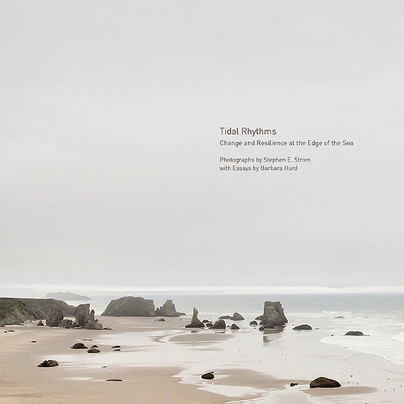
Format: Hardback
Pages: 176
ISBN: 9781938086458
Pub Date: 25 Jan 2017
Illustrations: 116 color photographs
Description:
Tidal Rhythms: Change and Resilience at the Edge of the Sea is a collaborative effort by photographer Stephen Strom and award-winning essayist Barbara Hurd. Strom’s images, taken along beaches in the Gulf of California and the Northern California and Oregon coasts, document a world teeming with ancient life-forms, clinging to rocks and finding nourishment but revealed for only a few hours before the tidal waters return. The primitive flora and fauna together create transient marine landscapes whose complex patterns resonate with what we humans perceive as beauty.
Following the rhythms of Strom’s images as they travel between intimate portraits and expansive vistas, Hurd’s lyrical and philosophical essays both continue and complicate those cadences as she explores not just resonance, but also disturbance. As artist and writer move us from high tide to low tide and from the panoramic to the minuscule and back again, the reader is confronted with the larger issues of what happens as the seas rises, warms, and acidifies. Tidal zones are one of the first landscapes to be threatened—almost invisibly—by global climate change. Mussels, barnacles, and tidal pools are flung and ruffled or warmed and acidified in ways that stress the lives of those who live there. Shells begin to thin, species migrate north, and habitats literally disappear, yet few people are even aware of these amazing environments. Change, of course, is part of an ancient pattern. For billions of years, the sea has risen and fallen, and life-forms have managed to adapt or not. But the current pace of change confronts us with a new and urgent question: Can the long-established but delicately balanced worlds between tidelines evolve rapidly enough to enable continued sustenance and maybe even a new beauty? In Tidal Rhythms, we are given the gift of a new world-view.

Format: Hardback
Pages: 328
ISBN: 9780813168746
Pub Date: 10 Jan 2017
Illustrations: 151 b/w images
Description:
When Gianni Bozzacchi accepted an assignment as a photographer on the set of The Comedians (1967), he didn't know that his life was about to change forever. His ability to capture the beauty of candid moments drew the attention of the film's star, Elizabeth Taylor, and prompted her to hire him as her personal photographer. Not only did he go on to enjoy a jet-set life as her friend and confidant -- preserving unguarded moments between the violet-eyed beauty and Richard Burton as they traveled the world -- but Bozzacchi also became an internationally renowned photographer and shot some of the biggest celebrities of the 1960s and 1970s.
In My Life in Focus, Bozzacchi traces his journey from humble beginnings to the sphere of the rich and famous. As a child, he cultivated his skills by working with his father -- a photographer for the Italian government. Following in his parent's footsteps was not something Bozzacchi had foreseen for his future; but his passion for taking pictures and his ability to put his subjects at ease enabled him to capture stunning images of some of the greatest stars of the twentieth century, including Audrey Hepburn, Steve McQueen, Raquel Welch, Mia Farrow, Clint Eastwood, and the royal family of Monaco.Beautifully illustrated with many of the photographer's most iconic images, this lively memoir reveals private moments in the Taylor-Burton love story and provides an invaluable behind-the-scenes look at the business of filmmaking and the perils of celebrity.
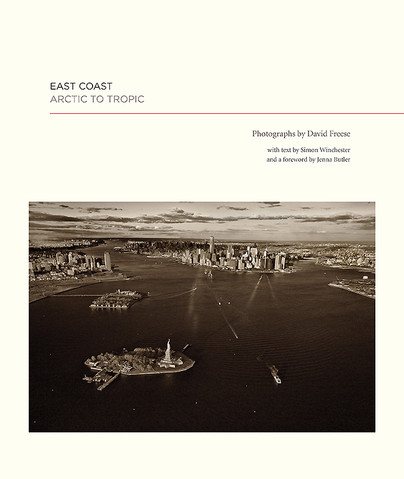
Format: Hardback
Pages: 320
ISBN: 9781938086441
Pub Date: 05 Jan 2017
Illustrations: 185 color photographs and 1 color map
Description:
The East Coast of North America is a wondrous, intriguing, yet threatened coastline. It zigs and zags for more than 5,500 miles and assumes a multifaceted, jigsaw shape from the Arctic Circle and Greenland across the Canadian Maritimes, then southward into Maine, Cape Cod, New York Harbor, the Delaware and Chesapeake Bays, along the Outer Banks to Charleston Harbor and on to Cape Canaveral. It ends at the Dry Tortugas on the western tip of the Florida Keys near the Tropic of Cancer.
In this companion book to "West Coast: Bering to Baja", David Freese has once again captured a vast coastal region—one that presently faces a major peril from the rising sea brought about by global climate change and higher temperatures on land and in the ocean. There are wonderful surprises here. The remote regions of Greenland, northern Quebec, Labrador, and Newfoundland offer breathtaking beauty that many people would not normally associate with the East Coast. As seen from the air, there are estuaries, fjords, cities, rivers, bays, wildlife refuges, parks, beaches, and islands that create stunning abstract shapes which also reveal their fragility in the face of the increasing sea-level. Simon Winchester, always the master storyteller, provides the informative and captivating tale about the geological underpinnings and climatic history of the Atlantic seaboard, including an ominous view of what lies ahead. Jenna Butler, an award-winning Canadian author, gives a noteworthy commentary on Freese’s photographs, as she places the images in context with the expansive North American environment and explains the effects and risks of global warming to the populations of Canada and the United States. East Coast: Arctic to Tropic is the perfect complement to West Coast: Bering to Baja, in which Freese explored the creation and dangers associated with the North American portion of the Pacific’s Ring of Fire. Together, the books provide a unique photographic and historical record of these two remarkably diverse Atlantic and Pacific Coasts at the very start of a true land-and-sea change brought about by human use of fossil fuels. In "East Coast: Arctic to Tropic", an extraordinary sequence of photographs tells the Atlantic tale and reveals an ocean that lies in wait.
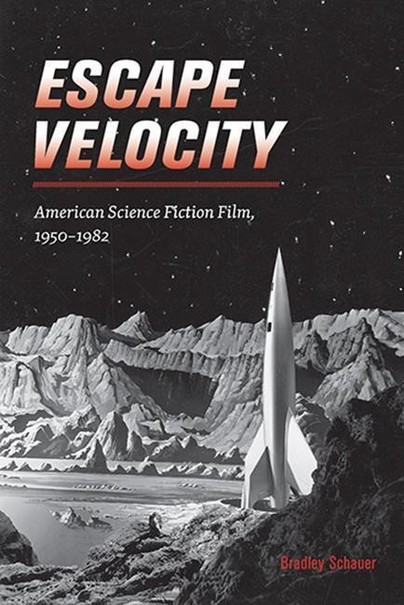
Format: Paperback
Pages: 288
ISBN: 9780819576590
Pub Date: 03 Jan 2017
Illustrations: 25 illus.
Description:
Today, movie theaters are packed with audiences of all ages marveling to exciting science fiction blockbusters, many of which are also critically acclaimed. However, when the science fiction film genre first emerged in the 1950s, it was represented largely by exploitation horror films—lurid, culturally disreputable, and appealing to a niche audience of children and sci-fi buffs. How did the genre evolve from B-movie to blockbuster?
Escape Velocity charts the historical trajectory of American science fiction cinema, explaining how the genre transitioned from eerie low-budget horror like It Came from Outer Space to art films like Slaughterhouse-Five, and finally to the extraordinary popularity of hits like E.T. Bradley Schauer draws on primary sources such as internal studio documents, promotional materials, and film reviews to explain the process of cultural, aesthetic, and economic legitimation that occurred between the 1950s and 1980s, as pulp science fiction tropes were adapted to suit the tastes of mainstream audiences. Considering the inescapable dominance of today’s effects-driven blockbusters, Escape Velocity not only charts the history of science fiction film, but also gives an account of the origins of contemporary Hollywood.

Format: Hardback
Pages: 240
ISBN: 9781938086427
Pub Date: 16 Dec 2016
Illustrations: 185 ambrotype plates (including 10 foldouts), 2 duotones, and 2 color photographs by the author, 4 historic photographs, and 4 black-and-white maps
Description:
Take Me to the River explores four post-industrial rivers that flow into the Atlantic Ocean—the Androscoggin (Maine/New Hampshire), Schuylkill (Pennsylvania), James (Virginia), and Savannah (Georgia/South Carolina)—as they emerge from two centuries of use and neglect. With vastly improved water quality in each river since enactment of the 1972 Clean Water Act, public affection has gradually increased as memories of foul smells and fetid water fade. Today, these rivers still carry the legacies of longstanding pollution in their currents and sediments, yet they have become waterways, renewed and rediscovered, that our grandparents never could have envisioned.
Take Me to the River comprises four portfolios of ambrotypes of these rivers, from source to sea. Three extensive essays offer different perspectives on ways of seeing and thinking about these places: one by the photographer on the collodion process; a historical view by Alison Nordström, the former Senior Curator of Photography at the George Eastman House, on the importance of Kolster’s work; and an environmental history of Atlantic rivers by the noted historian Matthew Klingle. Kolster’s dramatic yet understated photographs were made in a portable darkroom set up along the banks of the rivers with the wet-plate photographic process, a nineteenth-century method famously used to document the battlefields of the Civil War and the great vistas of the far American West. The chemical slurries that develop and fix the image on the glass plate mimic the movements of a river’s current, and the idiosyncratic qualities of the ambrotypes reference the historical coincidence of the dawn of photography and the industrialization of Europe and America. With consensus building about our changing climate and the extent humans are responsible, these four Atlantic rivers challenge us to set aside our usual blinders of seeing the landscape as either pure or despoiled. As the boundaries between the human and the natural are increasingly entangled, these rivers suggest how we might embrace, even cherish, places once degraded and ignored.
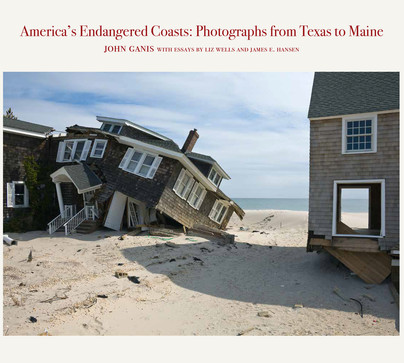
Format: Hardback
Pages: 232
ISBN: 9781938086434
Pub Date: 06 Dec 2016
Illustrations: 168 color photographs
Description:
America’s Endangered Coasts: Photographs from Texas to Maine is a pioneering and thought-provoking photographic survey of coastal areas of the Atlantic and Gulf Coasts of the United States that are already threatened by a rising sea. Using a topographic aesthetic that combines straightforward, highly detailed color photographs with GPS locations and elevations above sea level for each site, this book photographically responds to low-lying areas that are frequently over-developed and vulnerable to high tides and storms such as Hurricanes Katrina, Irene, and Sandy. This book contains 168 color photographs and two essays, one by Liz Wells, a prominent British writer who offers a photo/art perspective of the work, and one by Dr.
James E. Hansen, based on his prophetic scientific understandings of the climate-change crisis and some ways to address it. Current scientific projections conclusively show that the future of civilization along the world’s coasts is at stake due to the climate-change crisis. According to the latest conservative projections, Earth’s sea levels will rise by no less than three to four feet within a century and very possibly much more. This amount of sea-rise, compounded by hurricanes and storm surges, will threaten and make unsustainable large portions of the coastal areas of the Gulf of Mexico, from Texas to Florida, and the Atlantic seaboard, from Florida to Maine. All coastal areas of the world, in fact, are at risk, since nearly half of the world’ population lives along and near coastal regions. America’s Endangered Coasts promises to make an important contribution to the world of photographic art and to the public’s awareness of climate change and its impact on everyday life. The book serves as both a warning of things to come and a photographic document of lasting historical value, since many areas that Ganis has photographed will be underwater by 2100. It is the first book of its kind to offer such comprehensive geographic coverage of representative areas along the Atlantic and Gulf Coasts that are threatened now and in the future by a rising sea. “The coasts we’ve always known are shifting before our eyes. John Ganis’s fine book helps us with the job of paying witness; may it spur us to the job of preventing further damage.” — BILL MCKIBBEN, SCHUMANN DISTINGUISHED SCHOLAR IN ENVIRONMENTAL STUDIES AT MIDDLEBURY COLLEGE AND AUTHOR OF EARTH AND THE END OF NATURE “John Ganis has long been dedicated to exposing how the United States uses and abuses its lands. His photographs are clear and moving, putting us in places we have never been and encouraging us to see them. America’s Endangered Coasts constitutes another powerful wake-up call from the front lines of climate-change awareness.” — LUCY R. LIPPARD, AUTHOR OF THE LURE OF THE LOCAL AND UNDERMINING: A WILD RIDE THROUGH LAND USE, POLITICS, AND ART IN THE CHANGING WEST
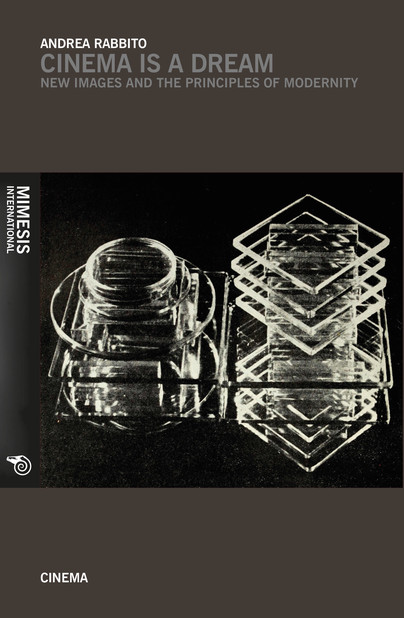
Format: Paperback
Pages: 232
ISBN: 9788869770661
Pub Date: 30 Nov 2016
Illustrations: 44 illustrations
Description:
The emergence and spread of new images - photography, film, television and audiovisual - have established an important epistemological revolution oriented contemporary man to take on a confident attitude not only towards the image but also to the real. The modern knowledge, that made explode man’s certainties in hundreds of relative truth, has been removed; the perfect double of reality offered by the new media has quietly deleted the doubt to the faithful restitution of reality into images, and, consequently, to the events of the outside world. To counter this credulity, this mental breakdown, so defined by Joseph Conrad, became widespread in contemporary society, we will need to recover the principles and themes of modern thought born in the seventeenth century.
A recovery, this, that will serve not only to oppose the illusions and deceit, but also to better understand the nature of the new images.

Format: Paperback
Pages: 156
ISBN: 9788869770562
Pub Date: 30 Nov 2016
Illustrations: 5 illustrations
Description:
The main objective of this edited collection is to examine the ways in which religion, culture and politics converge in configuring the contradictions of a post-war Italy’s cultural history. Starting from the assumption that to conduct a critical reflection on Italian post-war visual culture one must investigate the inevitable impact of Catholic religion on everyday life and its social, political and cultural dimensions, the volume employs the vantage point of cinema to propose a critique and exploration of religion’s influence on the Italian cultural landscape. The edited anthology thus seeks to examine how religion is lived, performed, criticized and represented from various methodological perspectives (historical, philological, aesthetic, psychoanalytical, popular studies etc), through four main sections: ‘Propaganda and Censorship’, ‘Auteurial Voices’, ‘Religion in Popular Italian Cinema’, ‘Modern rituals, Ancient myths’.

Format: Hardback
Pages: 160
ISBN: 9781910221112
Pub Date: 23 Nov 2016
Imprint: Anomie Academic
Illustrations: c. 12
Description:
Daphne Oram (1925–2003) was one of the central figures in the development of British experimental electronic music. Having declined a place at the Royal College of Music to become a music balancer at the BBC, she went on to become the co-founder and first director of the BBC Radiophonic Workshop. Oram left the BBC in 1959 to pursue commercial work in television, advertising, film and theatre, to make her own music for recording and performance, and to continue her personal research into sound technology – a passion she had had since her childhood in rural Wiltshire.
Her home, a former oasthouse in Kent, became an unorthodox studio and workshop in which, mostly on a shoestring budget, she developed her pioneering equipment, sounds and ideas. A significant part of her personal research was the invention of a machine that offered a new form of sound synthesis – the Oramics machine. Oram’s contribution to electronic music is receiving considerable attention from new generations of composers, sound engineers, musicians, musicologists and music lovers around the world. Following her death, the Daphne Oram Trust was established to preserve and promote her work, life and legacy, and an archive created in the Special Collections Library at Goldsmiths, University of London. One of the Trust’s ambitions has been to publish a new edition of Oram’s one and only book, An Individual Note of Music, Sound and Electronics, which was originally published in 1972. With support from the Daphne Oram Archive, the Trust has now been able to realize this ambition. An Individual Note is both curious and remarkable. When commissioned to write a book, she was keen to avoid it becoming a manual or how-to guide, preferring instead to use the opportunity to muse on the subjects of music, sound and electronics, and the relationships between them. At a time when the world was just starting to engage with electronic music and the technology was still primarily in the hands of music studios, universities, and corporations, her approach was both innovative and inspiring, encouraging anyone with an interest in music to think about the nature, capabilities and possibilities that the new sounds could bring. And her thinking was not limited to just the future of the orchestra, synthesizer, computer and home studio, but ventured, with great spirit and wit, into other realms of science, technology, culture and thought. An Individual Note is a playful yet compelling manifesto for the dawn of electronic music and for our individual capacity to use, experience and enjoy it. This new edition of An Individual Note features a specially commissioned introduction from the British composer, performer, roboticist and sound historian Sarah Angliss.
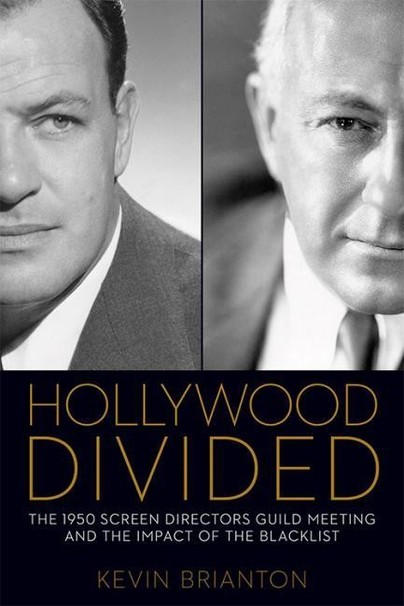
Format: Hardback
Pages: 174
ISBN: 9780813168920
Pub Date: 15 Nov 2016
Illustrations: 13 b/w photos
Description:
On October 22, 1950, the Screen Directors Guild (SDG) gathered for a meeting at the opulent Beverly Hills Hotel. Among the group's leaders were some of the most powerful men in Hollywood -- John Ford, Cecil B. DeMille, Joseph L.
Mankiewicz, John Huston, Frank Capra, William Wyler, and Rouben Mamoulian -- and the issue on the table was nothing less than a vote to dismiss Mankiewicz as the guild's president after he opposed an anticommunist loyalty oath that could have expanded the blacklist. The dramatic events of that evening have become mythic, and the legend has overshadowed the more complex realities of this crucial moment in Hollywood history.In Hollywood Divided, Kevin Brianton explores the myths associated with the famous meeting and the real events that they often obscure. He analyzes the lead-up to that fateful summit, examining the pressure exerted by the House Un-American Activities Committee. Brianton reveals the internal politics of the SDG, its initial hostile response to the HUAC investigations, the conservative reprisal, and the influence of the oath on the guild and the film industry as a whole. Hollywood Divided also assesses the impact of the historical coverage of the meeting on the reputation of the three key players in the drama.Brianton's study is a provocative and revealing revisionist history of the SDG's 1950 meeting and its lasting repercussions on the film industry as well as the careers of those who participated. Hollywood Divided illuminates how both the press's and the public's penchant for the "exciting story" have perpetuated fabrications and inaccurate representations of a turning point for the film industry.
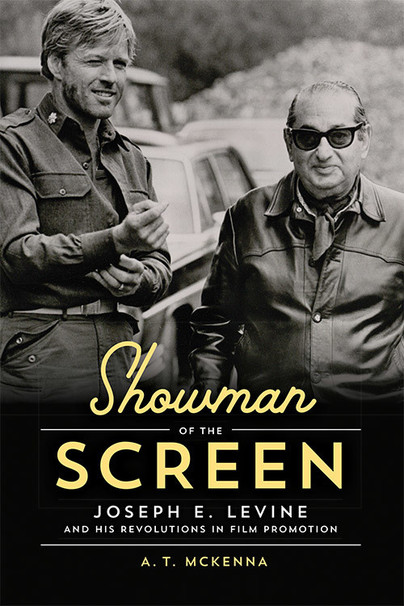
Format: Hardback
Pages: 296
ISBN: 9780813168715
Pub Date: 01 Nov 2016
Illustrations: 30 b/w images
Description:
Short, immaculately dressed, and shockingly foul-mouthed, Joseph E. Levine (1905--1987) was larger than life. He rose from poverty in Boston's West End to become one of postwar Hollywood's most prolific independent promoters, distributors, and producers.
Alternately respected and reviled, this master of movie promotion was responsible for bringing films as varied as Godzilla: King of the Monsters! (1956), Hercules (1958), The Graduate (1967), The Lion in Winter (1968), and A Bridge Too Far (1977) to American audiences .In the first biography of this controversial pioneer, A. T. McKenna traces Levine's rise as an influential packager of popular culture. He explores the mogul's pivotal role in many significant industry innovations from the 1950s to the 1970s, examining his use of saturation release tactics and bombastic advertising campaigns. Levine was also a trailblazer in promoting European art house cinema in the 1960s. He made Federico Fellini's 8½ (1963) a hit in America, feuded with Jean-Luc Godard over their production of Contempt (1963), and campaigned aggressively for Sophia Loren to become the first actress to win an Oscar for a foreign language performance for her role in Two Women (1960).Despite his significant accomplishments and prominent role in shaping film distribution and promotion in the post-studio era, Levine is largely overlooked today. McKenna's in-depth biography corrects misunderstandings and misinformation about this colorful figure, and offers a sober assessment of his contributions to world cinema. It also illuminates Levine's peculiar talent for movie- and self-promotion, as well as his extraordinary career in the motion picture business.
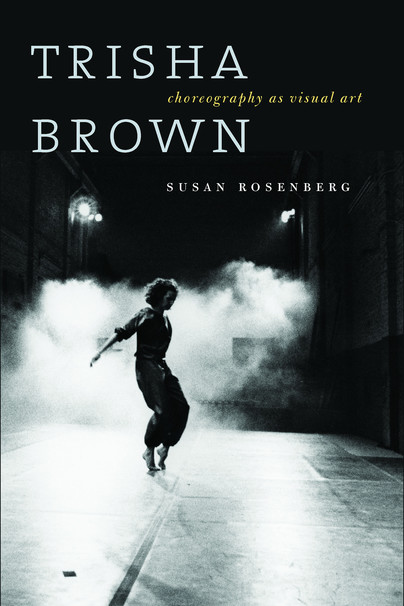

Pages: 424
ISBN: 9780819576613
Pub Date: 01 Nov 2016
Illustrations: 129 illus.
Pages: 424
ISBN: 9780819576620
Pub Date: 01 Nov 2016
Illustrations: 129 illus.
Description:
Trisha Brown re-shaped the landscape of modern dance with her game-changing and boundary-defying choreography and visual art. Art historian Susan Rosenberg draws on Brown’s archives, as well as interviews with Brown and her colleagues, to track Brown’s deliberate evolutionary trajectory through the first half of her decades-long career. Brown has created over 100 dances, six operas, one ballet, and a significant body of graphic works.
This book discusses the formation of Brown’s systemic artistic principles, and provides close readings of the works that Brown created for non-traditional and art world settings in relation to the first body of works she created for the proscenium stage. Highlighting the cognitive-kinesthetic complexity that defines the making, performing and watching of these dances, Rosenberg uncovers the importance of composer John Cage’s ideas and methods to understand Brown’s contributions. One of the most important and influential artists of our time, Brown was the first woman choreographer to receive the coveted MacArthur Foundation Fellowship “Genius Award.”
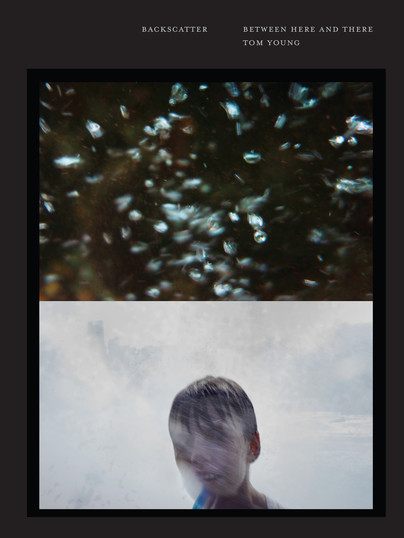
Format: Hardback
Pages: 112
ISBN: 9781938086380
Pub Date: 24 Oct 2016
Illustrations: 78 color photographs
Description:
"Backscatter is the reflection of particles, waves, or signals back to the direction from which they came: in underwater photography, back to the lens. The reflection, however, is diffuse, as opposed to clear like a mirror, thus softening images and even making them obscure.For this book, Tom Young has embraced backscatter as both subject and metaphor to render spaces below and above the water's surface—between here and there—in highly original ways.
Our senses are awakened as Young creates images that evoke an evolutionary path from sea to land, that speak of a global environment increasingly threatened by human action, and that enlighten our consciousness with an abiding spirit larger than ourselves. In Young's previous book, the masterful Timeline: Learning to See with My Eyes Closed, the artist was drawn to the way multiple images can be assembled into a single photographic plate that both alters the intent and enhances the meaning of the individual images. Young has followed that same path in Backscatter, as the edge of one image is shared with the edge of another that simultaneously can fuse them into one voice or let them remain as separate voices, suggesting a deep conversation either way. As the sequence evolves, so, too, does the visual narrative whose assembly of diverse images presents unexpected relationships and an unforgettable storyline. Metaphorically, Backscatter is about looking head on into a void where what lies above and below the water's surface can seem harmonious yet helter-skelter. As John Rohrbach observes in his afterword, this is a “ferocious book” that brings us to a myriad places, each one real and imagined, conveying an overall sense of the human journey through life."
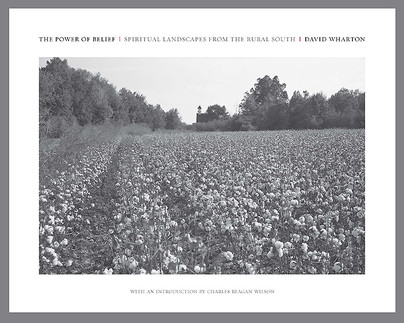
Format: Hardback
Pages: 176
ISBN: 9781938086397
Pub Date: 21 Oct 2016
Illustrations: duotone photographs by the author
Description:
Winner of the 2017 Mississippi Institute of Arts and Literature award for photography.The rural American South has no grand cathedrals or other wonder-of-the-world monuments to religious belief. Nor has it ever been the site of religious wars or large-scale religious persecutions we see throughout the world.
Nevertheless, as David Wharton reveals in his remarkable new book of photographs, the rural South is a place—a land, a region, a culture, a "way of life"—so heavily invested in religious belief that the spiritual is constantly made manifest in the ordinary. This is how religion becomes pervasive and integral to everyday life in the South for believers and nonbelievers alike.Just as David Wharton did for his pioneering book, Small Town South, he has traveled throughout the entire South since 1999, on hundreds of trips, making thousands upon thousands of photographs about the region's spiritual landscapes—from churches both active and abandoned in all vernacular shapes and sizes to actual church services and outdoor baptisms, from iconographic signs about Jesus and redemption and sin to welcoming gestures about the wonders of revivals and of grace and compassion. Lurking behind every image, however, is a sense of place about this most distinctive American region, in which religious commitment is confined neither to Sundays nor to individual houses of worship. Religion in the rural South is, quite literally, everywhere.It is Wharton's unique gift that his photographs have meaning and memory beyond merely recording the physical appearance of spiritual sites and worship activities. The people and places that appear in The Power of Belief are seen not to be a product of recent changes in religious life seen elsewhere in urban and suburban America but, instead, as an ongoing living tradition that dates back far into the history and culture of the rural South.

Format: Paperback
Pages: 440
ISBN: 9780819576538
Pub Date: 18 Oct 2016
Illustrations: 13 illus. (1 map, 4 tables)
Description:
This ground-breaking case study examines record production as ethnographic work. Since its founding in 2003, Seattle-based record label Sublime Frequencies has produced world music recordings that have been received as radical, sometimes problematic critiques of the practices of sound ethnography. Founded by punk rocker brothers Alan and Richard Bishop, along with filmmaker Hisham Mayet, the label’s releases encompass collagist sound travelogues; individual artist compilations; national, regional and genre surveys, and DVDs—all designed in a distinctive graphic style recalling the DIY aesthetic of punk and indie rock.
Sublime Frequencies’ producers position themselves as heirs to canonical ethnographic labels such as Folkways, Nonesuch, and Musique du Monde, but their aesthetic and philosophical roots in punk, indie rock, and experimental music effectively distinguish their work from more conventional ethnographic norms. Situated at the intersection of ethnomusicology, sound studies, cultural anthropology, and popular music studies, the essays in this volume explore the issues surrounding the label—including appropriation and intellectual property—while providing critical commentary and charting the impact of the label through listener interviews.


















